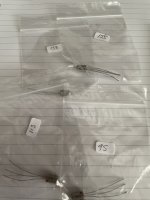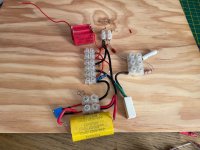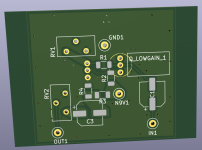So my next adventure will be a simple germanium fuzz face, I love the tone of the red dunlop fuzzface but rather than pay £160 for the official version, I'll DIY it. I've got a potential source for some AC128s so this is an order parts build but a 'keep it as cheap as possible' including some component reuse/salvage on some strip board. The order in means it won't qualify for the competition but this one is for some honking Hendrix tones so it will slowly evolve.
I'm just waiting to hear back what hfe they have available. One of the key points is a low hfe ~120 on the first PNP and then a higher on the second. I'll order four and see what fun we can have with adding some mods - potentially a opamp buffer/driver - however it depends on how the FF interacts with the impedance of the amp. A second mod may 'supercharge' the fuzz. Lots of options can fit into a mini pedal these days.
I'm just waiting to hear back what hfe they have available. One of the key points is a low hfe ~120 on the first PNP and then a higher on the second. I'll order four and see what fun we can have with adding some mods - potentially a opamp buffer/driver - however it depends on how the FF interacts with the impedance of the amp. A second mod may 'supercharge' the fuzz. Lots of options can fit into a mini pedal these days.




